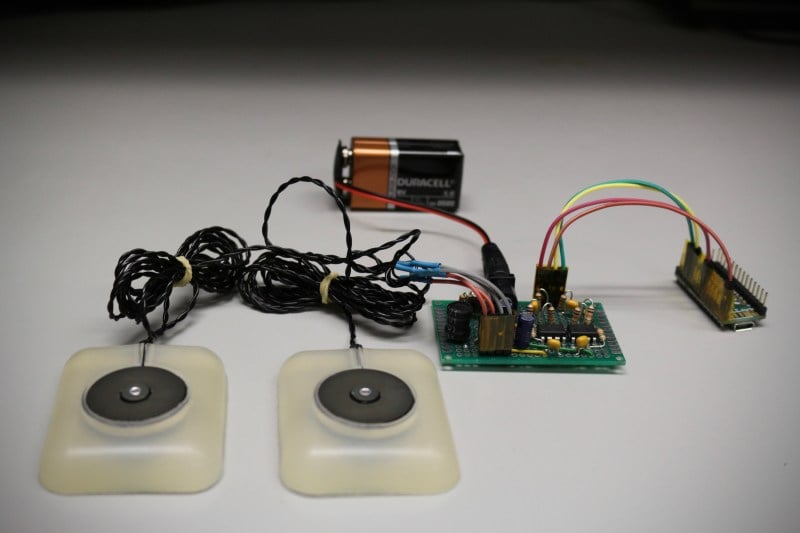The Wehab Lab of the Stanford Psychophysiology Laboratory has been working on developing a haptic breathing pacer (HBP) to address issues surrounding mental health and emotion dysregulation, an individual’s inability to change an undesired emotional experience. The device applies vibrations to a user’s body, with which they can synchronize their breathing to reduce arousal in high-stress situations.
The Wehab Lab of the Stanford Psychophysiology Laboratory has been working on developing a haptic breathing pacer (HBP) to address issues surrounding mental health and emotion dysregulation, an individual’s inability to change an undesired emotional experience. The device applies vibrations to a user’s body, with which they can synchronize their breathing to reduce arousal in high-stress situations.
Post-graduate researcher Pardis Miri described it as important for helping individuals cope with a stressor.
“There is significant recent interest in developing technology that can help people regulate high-arousal negative affect in the course of their everyday lives,” she wrote. Affect is an umbrella term for mood, stress, and emotions. Everyone experiences negative affect. It is not a personality trait. “These technologies have all been designed for a neurotypical population and, for the most part, [are] not well-evaluated for efficacy.” The term “neurotypical” refers to individuals without a developmental disorder.
Technologies being developed by other researchers are not evaluated with consideration for those with individual differences or the neurodiverse population, according to Miri. But Miri’s team found that their inconspicuous and personalizable breathing pacer prototype could be able to help individuals outside of the neurotypical population, she said.
The prototype proved to be especially promising, Miri wrote, for individuals who score low in terms of two traits: openness, as measured by the Big Five scale, and usage of reappraisal, a psychological strategy that lessens the emotional impact of a stressful event.
These are “characteristics commonly observed in Autism Spectrum Disorder (ASD) population, and so our findings suggest potential interventional success for individuals diagnosed with ASD,” Miri said.
“Helping these children successfully regulate their affect could have a major impact on their development and could prevent them from serious health issues,” Miri wrote.
Horia Margarit M.S. ’17, a member of the research team, used machine-learning techniques to analyze data collected from the prototypes.
He used a method published in 2017, he said. “Very few people even know about it, and that’s one of the major triumphs of our research because we were able to show this level of success using that technique.”
The team is focusing on improving the efficacy of their pacer for individuals with ASD.
“We believe our approach is promising for individuals diagnosed with ASD, and we also understand the risks that are involved,” Miri wrote. “Our goal is to create a personalizable vibrotactile system that utilizes the strengths of the autistic population to respond to their affect regulatory needs.”
Miri said her aim is to demonstrate the efficacy of her team’s approach in regulating the affect that individuals diagnosed with ASD experience in their daily lives.
“This is tremendously promising research because the entire concept behind this is similar to that of CRISPR and gene therapy: personalized medicine,” Margarit said. “What Pardis and I did was understanding people on a personal level in terms of mental health.”
This article has been updated to reflect the definition of “negative affect” given by Pardis Miri. The headline has also been updated to note that the device helps people with autism handle stress, not that it helps people cope with autism. The Daily regrets these errors.
Contact Camryn Pak at cpak23 ‘at’ stanford.edu.
